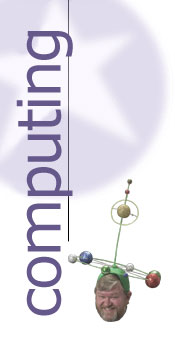Which Operating System
Should You Purchase
— Is OS/2 Better Than Unix?
by Lloyd Borrett
Technical Cornucopia, December 1990
In the last edition of "Technical Cornucopia" we looked
at the differences between OS/2 Presentation Manager and DOS
Windows operating environments. Now it's time to consider
how the OS/2 operating system stacks up against the oldest
of the three contenders, Unix.
Is OS/2 Better Than Unix?
The consensus today seems to be that the DOS
communicating workstation marketplace will fade
significantly within three to four years. In 1993, networked
desktop workstations will either run Unix or OS/2. However,
the dominant operating system will be OS/2.
Why? Both OS/2 and Unix are multi-tasking. Both can
access large amounts of memory and are available with
graphical user interfaces. Both can be used on almost any
kind of local or wide area network. Both operating systems
are available with lists of application program interfaces
ad nauseam. Both run on hardware supplied by many
manufacturers.
To assert that OS/2 is likely to dominate seems to ignore
the strong advantages that Unix has going into the fight.
Unix is well into its second decade, whereas OS/2 is only
celebrating its third birthday. That should give Unix a
significant lead in the numbers of applications available.
The Baggage Unix Carries
Ever since Unix was created by scientists at Bell
Laboratory back in the early 70s, it has been an operating
system that has reflected the ideas and needs of its
creators. While MS-DOS is regarded by many as a
user-unfriendly operating system, it is sweetness and light
when compared to Unix.
The user interface of most Unix applications reflects the
limitations of the character based terminals the operating
system was designed to use. Unix also reflects the mind set
of the early users of Unix in the laboratories and
universities it was designed for. In these implementations
there was no defined user interface. Users were encouraged
to modify existing tools and to develop their own tools so
as to create their own environments and interfaces. These
were typically cryptic and impossible to use in an office
environment. Unfortunately, too much of this inheritance is
still evident in today's implementations of Unix.
The result is that Unix based applications rarely come
close to supporting the bells and whistles of MS-DOS
applications, let alone the sexy and SAA compliant graphical
user interface of OS/2 Presentation Manager based programs.
The Unix operating system is available on a large number
of hardware platforms. Yet each of these implementations of
Unix is subtly different from the others, which often
produces incompatible systems. This is ironic given that the
original goal was to eliminate just such problems!
The myth of Unix is that all forms of Unix are
compatible, but in practise Unix should be seen as the
"Heinz 57 Varieties" operating system. Programs written to
run on one variety of Unix most likely will not run on the
other varieties.
Unix Standards: Take Your Pick
For many years a succession of standards groups have been
trying to clean up Unix and define a widely acceptable set
of standards for all implementations of Unix. Unfortunately,
little real progress has been made, and even more confusion
has been created in the marketplace.
An example of this confusion is the evolving standards
for a common graphical user interface for Unix. The three
leading contenders are Sun's Open Look, OSF/Motif and MIT's
XWindows, but there are many other players. It is hoped that
in time the number of competing Unix standards will be
reduced, but only a dreamer would expect the result to be
one all conquering Unix with the same graphical user
interface.
Meanwhile, most vendors of Unix and Unix based
applications are forced to support whatever is necessary to
make sales into each market they target. This adds greatly
to the implementation and maintenance costs of these
solutions.
Many of Unix's advantages are, in fact, its Achilles'
heels. It's true that Unix is older, but the larger
installed base of applications belongs to OS/2.
While Unix applications can be made compatible from one
hardware platform to another, it is at the source code
level, not the object code level. An off-the-shelf software
package for a Compaq SystemPro running SCO Unix will not
necessarily run on a Sun Microsystem running SunOS4. In
fact, it probably will not. There are moves to introduce
binary code portability to Unix applications, but once again
it is likely to be quite some time before the standards are
agreed upon and implemented.
OS/2 Advantages
One of OS/2's advantages is that it evolved from DOS. It
is easier to migrate a DOS application to the protected mode
of OS/2 than to migrate it to Unix. Also, most DOS
applications can be used on an OS/2 system already, and this
feature is to be significantly improved in OS/2 V2.0.
The planned future for OS/2, already in development, is
support for a wider range of computers, including RISC based
systems, and binary code portability between these systems.
Only a fool would believe that suddenly, after twenty odd
years, the Unix world is going to settle on a complete set
of standards and implement them before IBM and Microsoft
ship OS/2 V3.0.
Summary
One has to think that OS/2, not Unix, is the favourite to
become the dominant operating system of the networked
personal workstation. IBM and Microsoft will work together
and introduce the already planned and defined enhancements
to OS/2 while the supporters of Unix are still arguing for a
common set of standards for what already exists, let alone
what Unix could become.
Last modified: 6:59 am Thursday 25 September 2025
Local time: 4:41 pm Sunday 5 October 2025
|


